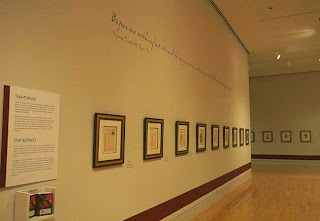“I came to the visual arts late. I was acting in plays, attempting the simple Chopin waltzes on the piano, and writing (terrible!) poetry by the time my age registered two digits; but I was so radically ungifted in art class that my parents were told I might have some sort of hand-eye retardation. By my teenage years, I had discovered the obvious—that it was even more satisfying for me to experience the arts than it was to produce them myself. And so I became a professional student of literature, plus all but bankrupting myself attending plays, concerts, and operas.
Even with this conversion from performer to connoisseur, though, painting and sculpture still seemed like a world beyond my capacities. Until, as a quite grown-up scholar, I realized that everything I had loved about the Renaissance literature had something to do with Renaissance art—that I couldn’t think about Petrarch without thinking about Giotto and Simone Martini, or Shakespeare without Titian, or the Renaissance rediscovery of ancient literature without the rediscovery of ancient sculpture. So I began to retrain myself as an art historian.
Then I came to Princeton, where for the first time I was able to develop close ties with a university museum. By some sort of elective affinity, I became acquainted with the superlative prints and drawings collection, masterfully managed by Curator Laura Giles and Associate Curator Calvin Brown, while, at the same time, I began work on a project that would eventually become Michelangelo: A Life on Paper. In this book, soon to be published by Princeton University Press, I attempt to understand the great artist’s inner life by looking at the combination of visual and verbal sketched on his worksheets—everything from doodles to finished drawings, from shopping lists to sonnets.
As it happens, there is in the Museum’s collection a piece of paper, containing the masterfully executed profile sketch of a young man with classical features and luxuriant ringlets, which is now fairly widely recognized as the Princeton Michelangelo. When I look at this remarkable five hundred-year old object, I am less interested in determining whether every single line of chalk was executed by the Master than I am in unlocking different sorts of enigmas. Was the artist memorializing a real person—friend? pupil? lover?—or was it rather his vision of an imaginary classical ideal? How might we understanding the nasty little hook-nosed caricature that hovers around the young man’s left sleeve? And what about the fact that x-rays have revealed a tiny architectural drawing, probably relating to a project in a much later phase of Michelangelo’s career, which suggests that he held on to this drawing for thirty years before using its flipside?
Speaking of long-term holdings, the fact that I have the chance to hold on to this drawing, just as the artist himself did, is a tribute to some 130 years of Princeton collecting—more specifically in this case, to Frank Jewett Mather Jr., director of the Museum for a quarter century and donor of this very sheet to the collection. But I’m not alone in enjoying this privilege. Visitors from the University, from the Princeton community, and from around the world not only have access to painting and sculpture in the many open galleries in the Museum; they are also welcome to make appointments to see the extraordinary holdings of work on paper.
I took advantage of that hospitality during the spring semester of 2009 by teaching an undergraduate seminar on Story-Telling in Pictures and Words, in which we moved back and forth between literary forms—short stories from Boccaccio to Grace Paley—and pictorial narratives, such as those based on the Bible and on Greek mythology. The highlight of our semester was a series of visits to Prints and Drawings. It wasn’t Michelangelo who occupied us, though. Early in the term, we did sit around the study room table contemplating the beautiful series of Hogarth’s Rake’s Progress; then, with the help of John Pinto, we unrolled and examined Piranesi’s amazing nine-foot etching of Trajan’s Column. But the visits that will remain most vividly in our minds involved the opportunity to study a different sort of work on paper, by Bud Fisher, Rube Goldberg, and Walt Disney.
From Piranesi to Pinocchio, from Michelangelo to Mutt and Jeff: that’s my idea of a great university museum.”











